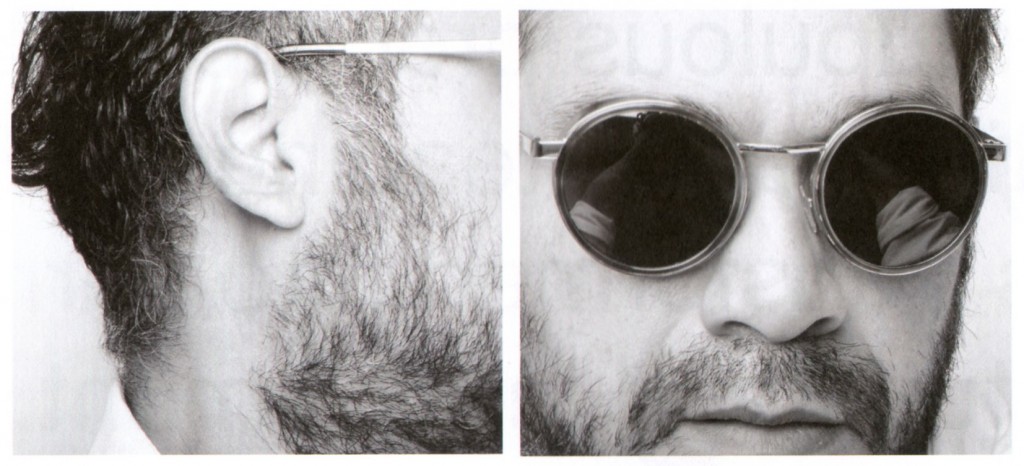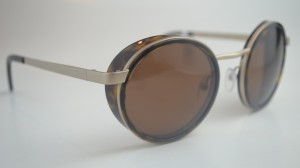Contemporary Jewelry: Sleek, modern, textured, bold, eye-catching, innovative, whimsical.
Road Architecture: Strong, functional, textured, utilitarian, monochromatic, plain, sometimes ugly.
What do the two have in common? Look closely. It’s all about texture. And Jacqueline Lung found an incredibly innovative way to bring these two media together.

Lung’s Steinar frame is made of real concrete, yet it’s light enough to wear. Photo by Patrick Han (cargocollective.com/patrickhan).
It all started in Lung’s freshman year at RISD (Rhode Island School of Design), when she fell in love with metalworking, particularly fine details, which add texture to smooth metallic surfaces. Lung initially worked on jewelry and tableware designs. And then something strange and wonderful happened: She discovered eyewear as the nexus of jewelry and function – an accessory that serves a necessity and also conveys the personality of the wearer. Lung explains:
I believe that … eyewear acts as a symbol of a persona … The relationship between eyewear and its wearer is symbiotic. On one hand the wearer desires the personality of the materials embodied in the eyewear, and on the other hand, the personality of the materials calls for activation by the wearer.
For her RISD Degree Project, Lung took a bold step. She decided to incorporate boring industrial materials — such as steel, concrete and even duct tape — into her eyewear designs to elevate their status and challenge eyeglass wearers to think about these materials in a new way. In her handmade line of eyewear, Industrial Spectacles, Lung brings out the hidden beauty in these materials. Says Lung:
“Shiny, ugly duct tape transforms into a soft, velvety, grey textile. Concrete presents itself as delicate graphic elements, rather than as massive spacious structures in which we reside. Parts of screws that are normally hidden below the surface are displayed, remaining functional while destabilizing the expectation of how they could be used. The hidden character of these materials are given agency as they rise to the surface and become accessible in the format of eyewear.”
Each frame in Lung’s new collection bears a name that reflects its featured material.
– Archytas: named after Archytas of Tarentum, an ancient Greek mathematician who is often credited as the inventor of screws
– Steinar: a Scandinavian name that combines “stone” and “warrior, referencing concrete and its origins
– Ludwig: named after Ludwig Mies van der Rohe, paying homage to his extensive use of I beams in architecture as both structural and decorative elements
– Akira: named after Akira Yoshizawa, a Japanese origami master, reflecting the foldable structure created by steel and duct tape in this piece
– Gunta: named after Gunta Stölzl, who was a Bauhaus weaving master, in reference to the duct tape weave structure.
Lung’s Archytas spectacles with mirror sun lenses are available at RISD Works store and at www.jacquelinelung.com
Dare to see yourself – and these materials – differently!













